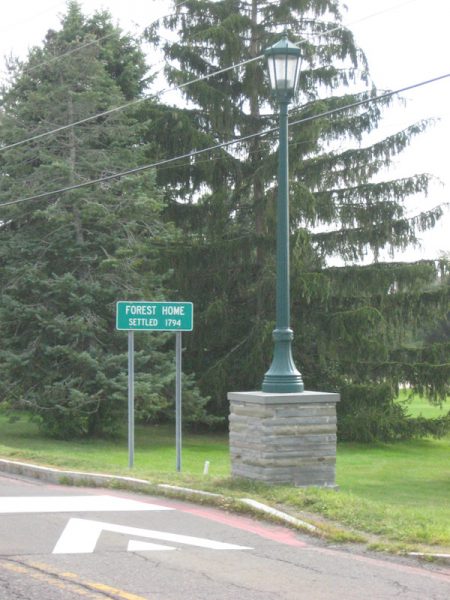Traffic Calming
Forest Home is an historic community that is dealing with traffic volumes and speeds that are incompatible with its historic nature as well as the safety of both residents and commuters, including cyclists and pedestrians.

In 2005, FHIA began a traffic calming initiative. The speed bumps and lights at the edge of Forest Home are one of the results of this initiative.
In 2023, following lobbying by members of FHIA, the Town commissioned a study that included a survey of the sharp bend between the Chapel and the Upstream Bridge and feasible turning circles. As a result, in March 2024, a vehicle-length limit of 25 ft. was implemented for the stretch of Forest Home Drive between Warren Road and Caldwell Road.
In 2024-25, FHIA carried out a community-wide planning process, which identified priorities for improvements to the community’s streets and pedestrian pathways. Here is a summary of the report.
The Traffic Calming Study (2005-2007)
As part of the 2005 initiative, FHIA commissioned a study by consultants. They reported in 2007. The report provided a comprehensive overview of traffic and the options for the neighborhood. The report was submitted to the Town of Ithaca and construction of the entrance features took place in 2010.
Surveys in 2005 and 2011 compared traffic speeds before and after the work. They show that the project did indeed reduce traffic speeds. Much of the data and many of the recommendations are still relevant today.
More information about the traffic calming study, comments from the community, and the follow up activities is available from:
A 2018 archive at the Internet Archive
.